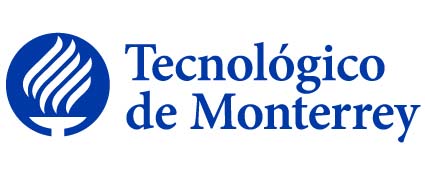
|
|||||
Disciplina asociada:Finanzas |
|||||
Escuela:
Negocios
|
|||||
Departamento Académico:
Contabilidad y Finanzas
|
|||||
Programas académicos: |
|||||
Requisitos:No tiene. |
|||||
Equivalencia:FZ1000 ; FZ1010 |
|||||
Intención del curso en el contexto general del plan de estudios: |
|||||
|
Es un curso de nivel básico en el campo de estudio de la administración financiera. Introduce al estudiante en la idea fundamental del valor del dinero a través del tiempo mediante los conceptos de interés, tasa de interés (nominal, efectiva, real y fuerza de interés), valor presente y futuro, tasas interna de rendimiento y descuento, anualidades, así como las relaciones existentes entre estos conceptos. Así mismo, resolverá problemas que involucren mencionados elementos planteando ecuaciones de valor y usando de forma intensiva el programa Excel. Como producto de aprendizaje de este curso se espera que los estudiantes elaboren, en equipos: 1. Un proyecto donde evalúan el costo efectivo -o CAT- de una fuente de financiamiento real; 2. Generan por lo menos dos reportes donde efectúan un análisis comparativo de costo-beneficio entre diferentes tarjetas de crédito, débito, Afores o fondos de inversión, crédito hipotecario y/o automotriz. |
|||||
Objetivo general de la Unidad de Formación: |
|||||
|
Al finalizar este curso el alumno será capaz de: -Aplicar los conocimientos de Matemáticas Financieras para plantear y resolver problemas financieros prácticos tanto en el ámbito personal como el empresarial. -Elaborar modelos financieros sencillos en Excel que faciliten la toma de decisiones. |
|||||
Técnica didáctica sugerida: |
|||||
| Aprendizaje colaborativo | |||||
Bibliografía sugerida: |
|||||
|
LIBROS DE TEXTO: * Héctor M. Vidaurri, Matemáticas financieras, cuarta, CENGAGE, 2008, Español, * Zima, P. & Brown, R. L., Matemáticas financieras, segunda, McGraw-Hill, 2006, Español, LIBROS DE CONSULTA: * José L. Villalobos, Matemáticas financieras, segunda o superior, Pearson Education, Prentice Hall, 2011, Español, * Díaz Mata, A. & Aguilera, V. M., Matemáticas financieras, cuarta o superior, McGraw-Hill, 2013, Español, |
|||||
Perfil del Profesor: |
|||||
|
((520801)Licenciatura en Finanzas y (520201)Maestría en Administración/Dirección de Negocios) ; ((520301)Licenciatura en Contabilidad y (520201)Maestría en Administración/Dirección de Negocios) ; (520801)Maestría en Finanzas ; (450601)Maestría en Economía ; (520801)Doctorado en Finanzas ; (450601)Doctorado en Economía CIP: 520801, 520201, 520301, 450601 |
|||||
|
|||||
Discipline:Finance |
|||||
School:
Business
|
|||||
Academic Department:
Accounting and Finance
|
|||||
Programs: |
|||||
Prerequisites:None. |
|||||
Equivalences:FZ1000 ; FZ1010 |
|||||
Course intention within the general study plan context: |
|||||
|
This is a basic course in the area of financial management introducing students to the fundamental concept of the Time Value of Money. The following concepts and their interrelations form the backbone of the course: simple and compound interest calculations; rates of return and discount rates; real, nominal and effective interest rates and interest-rate conversions; annuities (ordinary, due and deferred); present value, net present value, future value and internal rate of return; amortization; sinking-fund calculations; arithmetic and geometric gradients. These tools facilitate making optimal decisions when given several alternative courses of action and will be used to solve many practical problems. Students will also learn how to structure and solve problems in Excel. In addition to exams and individual assignments, students are expected to work in small groups and hand in the following deliverables: a project in which they evaluate the annual effective cost (or CAT) of an actual financial product, credit or other source of financing; at least two documents in which they present a comparative cost-benefit analysis of different financial institutions and/or their products, for example, credit- or debit cards, Afores (pension funds), mutual funds, etc. |
|||||
Course objective: |
|||||
| The course is designed to develop analytical skills for sound decision-making. After this course, it is expected that students understand and are able to apply the main concepts, measures, and tools of interest-rate mathematics, to make optimal decisions when faced with alternative financial products, proposals, or courses of action, both in a personal or business context. | |||||
Teaching and learning tecniques: |
|||||
| Collaborative learning | |||||
Suggested Bibliography: |
|||||
|
TEXT BOOKS: * Héctor M. Vidaurri, Matemáticas financieras, cuarta, CENGAGE, 2008, Español, * Zima, P. & Brown, R. L., Matemáticas financieras, segunda, McGraw-Hill, 2006, Español, BOOKS FOR CONSULTATION: * José L. Villalobos, Matemáticas financieras, segunda o superior, Pearson Education, Prentice Hall, 2011, Español, * Díaz Mata, A. & Aguilera, V. M., Matemáticas financieras, cuarta o superior, McGraw-Hill, 2013, Español, |
|||||
Academic credentials required to teach the course: |
|||||
|
((520801)Bachelor in Finances and (520201)Master Degree in Business Administration/Management) and ((520301)Bachelor in Accountancy and (520201)Master Degree in Business Administration/Management) and (520801)Master Degree in Finances and (450601)Master Degree in Economy and (520801)Doctoral Degree in Finances and (450601)Doctoral Degree in Economy CIP: 520801, 520201, 520301, 450601 |
|||||